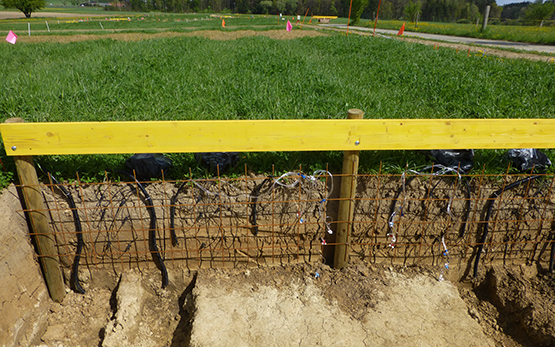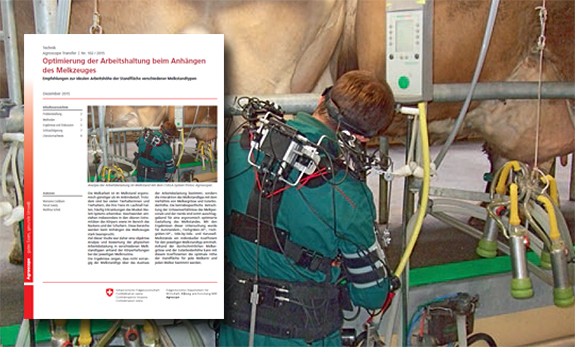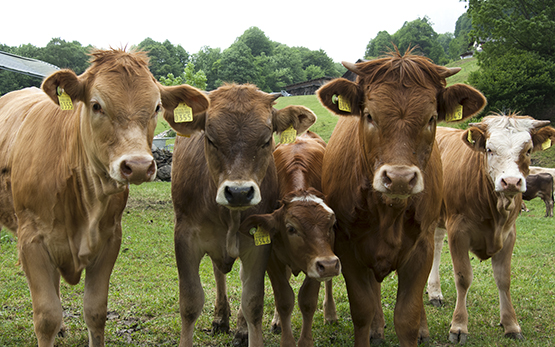Reissig L.
LandwirtInnen und ihre Wahrnehmung zum Thema Datensicherheit.
Dans: 46. Agrarökonomie-Tagung. 21. November, Ed. Agroscope, Tänikon (CH). 2023, 1-18.
Reissig L.
The understanding of digitalisation in agriculture by small-scale farmers: The importance of clear terminology.
Social Sciences and Humanities Open, Preproof, 2023.
Reissig L.
Psychological factors influencing the adoptation of digital technologies in agriculture by farm managers.
Dans: Conférence ESRS European Society for Rural Sociology. 4 July, Rennes. 2023, 1-14.
Reissig L., Cockburn M.
Neuer Rohstoff aus der Landwirtschaft.
Schweizer Bauer, 20. Mai, 2023, 4.
Heitkämper K., Reissig L., Bravin E., Glück S., Mann S.
Digital technology adoption for plant protection: Assembling the environmental, labour, economic and social pieces of the puzzle.
Smart Agricultural Technology, 4, 2023, 1-11.
Reissig L.
Farmers and their data: An examination of farmers’ attitude towards data sharing according to the stage of digital farming adoption: 3.2.6.
Dans: Farm data integration – key to cattle management success: COWDATA finale report. Mai, Ed. ICT-AGRI ERA-NET, 2022, 30.
Reissig L.
Einfluss sozialer und psychologischer Faktoren auf die Adaption digitaler Technologien in der Landwirtschaft durch Betriebsleiter und Betriebsleiterinnen in der Schweiz.
Dans: 42. GIL-Jahrestagung. 17.-18. Februar, Ed. M. Gandorfer, C. Hoffmann, N. El Benni, M. Cockburn, T. Anken, H. Floto, Gesellschaft für Informatik e.V. (GI). 2022, 241-246.
Reissig L., Mack G.
Why farmers perceive the use of e-government services as an administrative burden: A conceptual framework on influencing factors.
Journal of Rural Studies, 89, 2022, 387-396.
Reissig L.
Perception de la transition numérique par les agriculteurs.
Ed. BLW, Bern. Décembre, 2021, 5 pp.
autres langues: allemand | italien
Reissig L.
Les esprits que je n’ai pas invoqués.
Revue UFA, 12, 2020, 14-15.
autres langues: allemand
Reissig L., Mann S.
Wahrnehmung der Digitalisierung in der Landwirtschaft – eine Befragung von LandwirtInnen.
Dans: 43. Agrarökonomie-Tagung. 6. Oktober, Ed. Agroscope, Tänikon. 2020, 1-26.
Reissig L.
Erste Ergebnisse - Digitalisierung in der Landwirtschaft Definition versus Wahrnehmung der LandwirtInnen.
Dans: 40. GIL Jahrestagung. 17. Februar, Ed. GIL, Freising - Weihenstephan D. 2020, 1-21.
Stoinescu A., Reissig L., Mack G.
Does e-government contribute to a reduction of farmers’ administrative burden in Switzerland.
Dans: Informatik in der Land-, Forst- und Ernährungswirtschaft. Fokus: Digitalisierung für Mensch, Umwelt und Tier. 17.-18. Februar, Ed. GIL Jahrestagung, Freising - Weihenstephan D. 2020, 1-6.
Mann S., Zaharia I., Reissig L.
Social policy and burnout: A bi-national comparison.
The International Journal of Health, Wellness and Society, 9, (4), 2019, 63-75.
Reissig L., Crameri A., von Wyl A.
Prevalence and predictors of burnout in Swiss farmers: Burnout in the context of interrelation of work and household.
Mental Health & Prevention, 14, (200157), 2019.
Reissig L.
Frequency of Burnout in the Swiss farming sector.
Agroscope Science, 82, 2019, 1-15.
Rossier R., Reissig L.
Entre exploitation et famille : les cheffes d’exploitation agricoles en Suisse : Une enquête budget-temps.
Agroscope Transfer, 78, 2015, 1-8.
autres langues: allemand | italien
Reissig L.
Fällt auf bäuerlichen Biofamilienbetrieben mehr Arbeit an?
Dans: 13. Wissenschaftstagung zum Ökologischen Landbau. 17. bis 20. März, Ed. A. M. Häring, & R. Hoffmann-Bahnsen, Eberswalde. 2015, 596-599.
Reissig L.
World Café «Croissance dans l’agriculture». .
Recherche Agronomique Suisse, 5, (9), 2014, 378-381.
autres langues: allemand
Rossier R., Reissig L.
Contribution des paysannes aux exploitations familiales agricoles en Suisse : Une enquête budget-temps.
Agroscope Transfer, 21, 2014, 1-8.
autres langues: allemand | italien








